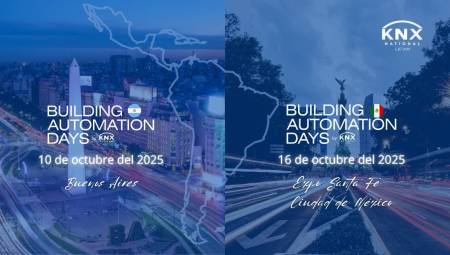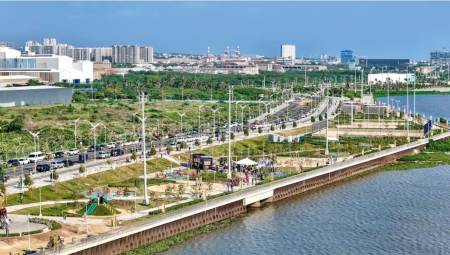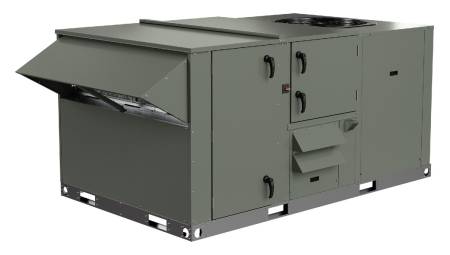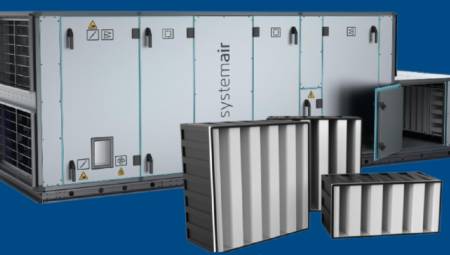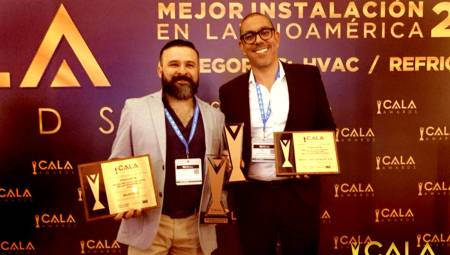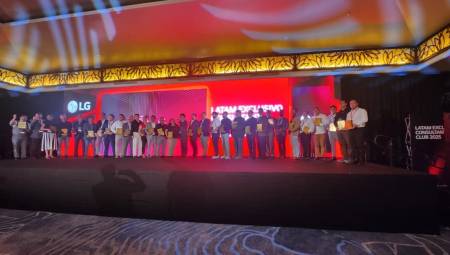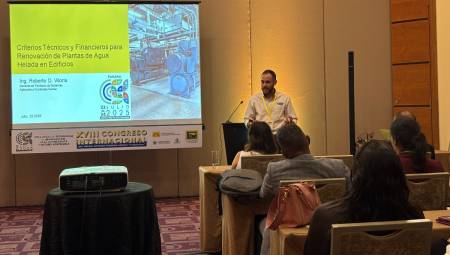By: Ron Bernstein, CEO, LonMark® International
Open control systems and data network convergence
Data network convergence can best be achieved through open control networks, as integration is the key to information exchange; so let me start by explaining to you the difference between open systems and closed systems before I describe to you the network convergence between LON, LAN, and WAN.
Closed systems
Traditional closed systems are simple vendor solutions, typically resulting in costly service and system expansion, with limited subsystem expansion, and limits on the number of service providers. Closed systems tend to restrict interoperability with other systems, and vendors limit options and create "islands of automation." all this is that the owners are "locked in" during the service time of the system.
Open systems
Multiple vendors make it possible for the service and expansion of the system to be economical and easy to acquire, and allow at any time the expansion at the level of the device and the subsystem. The complete choice of service providers facilitates interoperability with other vendors and systems, and allows for a wide range of options. Open systems are flexible and expandable automation solutions. All this makes it possible for owners to be free to choose throughout the service time of the system.
Defined open systems
Open building systems are created using multi-vendor products and systems that ultimately offer greater flexibility, easier handling, higher levels of scalability, and lower lifecycle costs. In addition, open systems offer greater vendor and supplier options, lower energy costs, lower installation and lifecycle costs, allow additions, movements and changes more easily, allow better access to information and greater control over the installation.
BOX
Open vs Closed (overview)
Open
•Published Industry Standard
•Adopted by most industry suppliers
•Products from multiple vendors working in a single system
•No engineering efforts required to "make them work"
•Multiple integrators can work on the same task
•More than one GUI type in the system
•Multiple sources of interoperable competitive products
•System service from multiple sources
•Network management tools available for installation from multiple sources
•Logically flat architecture
•Expandable with transparent routers
•No communication links (gateways), or only communication link for previous systems
•Allows independent integrators
Closed
•Promotion of a single company
•Adopted only by a few or by a single supplier
•Only one product from limited sellers or sellers works in the system
•Requires a complex engineering effort to "make them work"
•Only an integrator can work on the job
•Only one GUI type can be used in the system
•Limited or single product source
•System service by single source only
•A limited tool or tools available. They can only work with devices from one vendor
•Logically bound architecture, which uses communication links (gateways)
•Limited expansion, no routers
•Extensive use of communication links (gateways); new or old system
•Allows single-company solution
What is an integrated system?
Building-level integration means access to information. All building services, such as lighting, fire elements, access, energy, HVAC, elevators, security, communications, measurement and monitoring of services, are connected to each other. The LON acts to connect devices in a control network within a single cohesive network that shares standard network variables, which are exchanged between devices and sent to a PC and the Internet. Remote access is achieved over the LAN, using an IP-852 router or an oBIX XML server or a web server. The WAN offers remote monitoring and control of the entire system, adjusting to business solutions such as SAP, Oracle or IBM systems, for example.
Access to information is the key
Information is power. The modern building must manage and integrate information from a range of sources including alarm, control, monitoring, set point changes, overrides, scheduling changes, maintenance programs, event reporting, quality control, energy management and broad business consistency. Access to this information should be simple, fast and easy. It must offer complete integration and cost reduction. It should be available over the network, or at home, or on the road, with different levels of access for different staffing needs. The entire commercial enterprise must be integrated, including all remote locations. All subsystems should be working together and management should be facilitated with a reduction in costs.
All these demands imply that the solution must be a fully integrated system with a platform that will grow over time, that is not currently limited or that, in the near future, uses the latest advances in technology, but that its operation is checked (nobody wants to be a guinea pig), and must reduce installation and lifecycle costs, simplify handling operations, and deliver positive returns on investment.
Components: IP-852, web services and oBIX - LON-LAN-WAN junction
IP-852 – an overview
The IP-852 is a message router standard developed by LonMark for LON-to-LAN message transfer, offering device-to-device messaging on a network, making tulenization over LAN/WAN possible. All information in the data packet remains intact, so that nothing is lost, and is supported by CEN, EIA and ANSI.
Web Services
Web Services make it possible to transfer messages from computer to computer and is platform independent -MAC, PC, SQL, SAP, Oracle, Sybase, etc. It is the IT standard.
oBIX
oBIX is OASIS' standards initiative for the exchange of building data information, which acts as a network server for any data transfer from the computer host . The message details are separated and only the translated data remains. oBIX satisfies the need for standard data and device profile definitions in the XML layer. It is supported by LonMark, but is not limited to the LON.
In fact, LonMark International has been involved in web services solutions for many years. It has also supported the effort of "oBIX" to standardise web services on a fully industrial scale never seen since the group's conception. In the future, we expect the continued integration of web services into LonMark open systems.
oBIX was formally proposed within the CABA (Continental Association of Automated Buildings). oBIX stands for: open Building Information eXchange . Chosen for its Internet-centricity, oBIX offers the solution to the needs of a common XML-based method of data acquisition and control at the enterprise level.
The following four questions (with their answers) should help clarify any remaining doubts regarding LONs, LANs, and WANs:
Question: Are you ready at oBIX to meet the challenge?
Answer: Version 1.0 is currently available for download and review. LonMark currently converts SNVTs (Standard Network Variable Types). Different vendors are implementing solutions based on this effort. Version 2.0 is also under development, in order to expand reach and capacity. For more information, visit: http://www.oasis-open.org.
Q: Does the oBIX replace an enterprise-level LNS® direct connection?
A: oBIX offers common data formatting across different systems for monitoring, but cannot perform protocol-level configuration or enterprise-level system provisioning. Proposed future versions may incorporate additional handling functionality. LNS continues to offer management, monitoring, and control without joins, within a LON system. oBIX has the potential to penetrate, outside the LON, into other solutions.
Q: So how does oBIX fit in with the LonMark system definition vision?
A: LonMark supports enterprise-level shared data, system-level interoperability, and device-level interoperability via XML. This translation of LonMark data types to and from their XML equivalents is achieved using XML schema and style sheets in a standardized format, such as the oBIX. LonMark can use XML packets (oBIX) or ANSI/EIA/CEA-852 tunneled binary IP packets: "IP-852".
Q: Why use both?
A: Both offer enterprise-level connectivity in which oBIX offers a basic interface and the IP-852 offers LONWORKS without joins. A combination of both is the ideal solution.
So finally, be sure to ask for an open control system. Don't hold on to closed systems. Make sure you are not locked in at any level of the system. Promote the integration of multiple subsystems for maximum efficiency; start from a good open specification framework and learn the technologies, options and directions of the market. After all, the freedom of open information exchange is coming to power.


